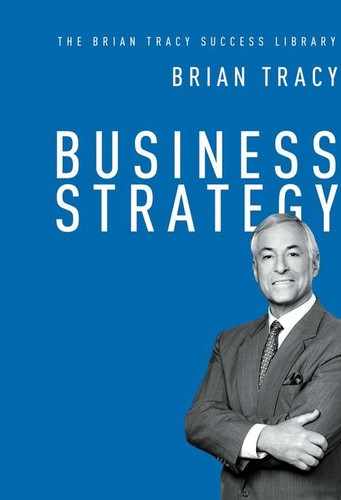Create New Markets
Here’s a risky strategy that can lead to great rewards: creating a new market. The best way to create a new market is to find the problem first. There are problems for which there are no solutions. Your solution is the new market. Minivans fill our roads today, but it wasn’t so long ago that the market for minivans didn’t exist. Chrysler, recognizing that its gas-guzzling full-size vans were becoming less popular, saw the need for a scaled-down version of vans. A new and very profitable market was born.
Four Paths
In his book Creating and Dominating New Markets, Peter Meyer gives four paths for creating and dominating new markets.
Path 1. Create a new product for an unknown customer set. This is the riskiest of the paths. You are creating a new product for a new customer set. You have no experience or knowledge on which to build; you are starting with a clean slate. It’s not impossible to succeed if you hit on the right problem. When Netscape created a web browser, it created a new product for unknown customers—most people weren’t using the Internet at the time. Would there be enough people to eventually use the Internet to make a browser profitable? Did Netscape create the right product for browsing through the Internet? In hindsight, the answers are obvious, but at the beginning of the process, Netscape had to make the investments with little idea of the outcome.
Path 2. Create a new product for a known customer set. Path 2 has a major advantage over path 1 because you have some knowledge and experience to build on, specifically your history with the customer. You know or have a good idea of what customers want or will want.
Path 3. Create a known product for a known customer set. While this may seem the easiest path, it is actually quite difficult because to create a new market, you have to break from what’s been done in the past. Often, companies are not really creating a new market; they are only creating a variation of an existing market—basically doing nothing more than a line extension.
Path 4. Create a known product for an unknown customer set. Here, like with path 2, you have the advantage of building on some knowledge but with room to innovate. As a result, the risks are reduced. You know that the product has sold to previous customers, so the chances are greater that it will succeed with new customers.
The most important success factor in creating new markets is to ask your customers. The goal is not to ask them about products but about problems. If you ask about products, they’ll frame the problem in the context of those products. Your goal, however, is find ideas for new products. Let customers describe what they think would be the best solution to their problems; those solutions will point to new products or services.
Key Success Factors
Creating new markets is not a strategy for those looking for easy wins. But you can increase your chances for success, according to Meyer, if you follow these guidelines:
![]() Let the customer drive. Customer-driven markets have a greater chance of succeeding than vendor-driven markets because customers usually know what they want . . . and what they don’t want!
Let the customer drive. Customer-driven markets have a greater chance of succeeding than vendor-driven markets because customers usually know what they want . . . and what they don’t want!
![]() Take the easier paths. If you can, go for paths 2 or 4. Build on something already in place (a known product or a known customer set).
Take the easier paths. If you can, go for paths 2 or 4. Build on something already in place (a known product or a known customer set).
![]() Don’t chase every opportunity. Not every opportunity is going to be worth the attention, especially if it is diluting your efforts.
Don’t chase every opportunity. Not every opportunity is going to be worth the attention, especially if it is diluting your efforts.
![]() Build cross-functional teams. A new market will never be the purview of just one function. Everyone will need to be involved.
Build cross-functional teams. A new market will never be the purview of just one function. Everyone will need to be involved.
The blue ocean strategy concept, developed by professors W. Chan Kim and Renée Mauborgne, is based on the idea that most companies battle in a part of the ocean that is filled with competitors and the (metaphorically speaking) bloody competition makes that part of the ocean red. All of today’s industries are red oceans. Instead of fighting the competition, a better strategy is to create your own market: to find a blue ocean where there are no competitors.
To do this, Kim and Mauborgne present different tools and concepts in their famous book, Blue Ocean Strategy. At the heart of this strategy is “value innovation,” which they describe as the “simultaneous pursuit of differentiation and low cost.” Differentiation is what customers want; value, in the customer’s eyes, is the “utility” of the product minus its price. Low cost is what companies want; value for companies is the price minus the cost to make the product.
Value innovation lowers costs by eliminating factors that the industry competes on, but increases value by creating factors the industry does not compete on. For example, Canon’s traditional competitors sold large, durable copiers to corporate purchasers. Canon had the idea to change the buyer; instead of focusing on corporate purchasers, it decided to focus on the people who used the copiers, the administrative assistants. Suddenly the key competitive factors changed . . . and the desktop copier industry—a sparkling blue ocean—was born.
